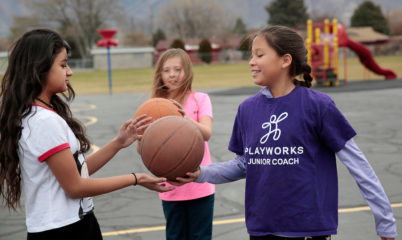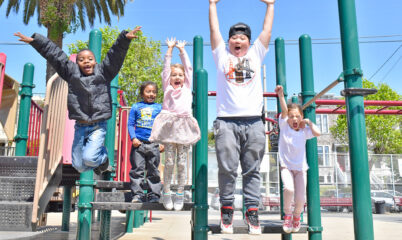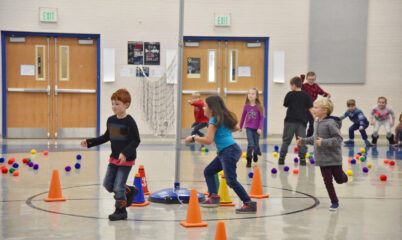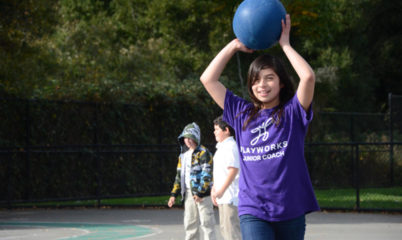A randomized controlled trial by Mathematica Policy Research and Stanford University evaluating Playworks shows widespread benefits including less bullying, more physical activity, and more time for teaching.
A new study released by Mathematica Policy Research and the John W. Gardner Center at Stanford University suggests that there may be more to recess than just a break in the day.
The randomized controlled trial of Playworks found that the program reduced bullying, improved feelings of safety, increased physical activity, and provided more time for classroom teaching. The research raises the possibility that what happens at recess can affect a school’s learning environment in important ways, and that improving recess may enable schools to address a number of pressing issues at the same time.
“These findings tell us there is much more to recess than meets the eye,” said Nancy Barrand, senior program officer for the Robert Wood Johnson Foundation, which sponsored the research trial. “If a single program at recess can prevent bullying, help students be more physically active, and give teachers more time to teach, it suggests that schools ought to take a much harder look at what is happening on their own playgrounds at recess.”
Key findings include:
- Less Bullying. Teachers in Playworks schools reported significantly less bullying and exclusionary behavior during recess compared to teachers in control schools—a 43 percent difference in average rating scores.
- Increased Feelings of Safety at School. Playworks teachers’ average rating of students’ feelings of safety at school was 20 percent higher than the average rating reported by teachers in control schools.
- More Vigorous Physical Activity. Accelerometer data showed that children in Playworks schools spent significantly more time in vigorous physical activity at recess than their peers in control schools (14 percent versus 10 percent of recess time—a 43 percent difference).
- Ready to Learn. Teachers in Playworks schools reported spending significantly less time to transition from recess to learning activities (34 percent fewer minutes).
According to Susanne James Burdumy, education area leader for Mathematica, “the impact analysis showed that Playworks had a positive impact on outcomes in the school climate, conflict resolution and aggression, learning and academic performance, and physical activity domains. These impacts suggest that Playworks was beneficial to schools, teachers and students along multiple dimensions.”
Better recess possibly key to a better school day
Despite shrinking budgets, schools are faced with the challenge of boosting academic performance while also having to address the social, emotional and physical needs of students. Recess and other school-based playtime are some of the least studied elements of the school day. Elementary school principals and teachers often say, however, that as goes recess, so goes the school day. This new research contributes to a growing body of evidence that a safe, healthy, and organized recess environment—like the one Playworks seeks to provide — has the potential to be a key driver of better behavior and learning.
A non-experimental study conducted by the University of California, San Francisco found that students from schools with Playworks reported higher levels of physical activity, participation at school, problem-solving, and goals/aspirations compared to students from schools without Playworks. In another evaluation, the Harvard Family Research Project credited Playworks with improving cooperation among students and strengthening bonds among students and between kids and adults in school. In Baltimore, principals have been using programs such as Playworks with the goal of reducing conflicts and suspensions.
“If we want to bring out the best in our kids, we should start by giving them a great recess,” said Jill Vialet, CEO and founder of Playworks. “A great recess primes young people to learn and puts them in a better position to succeed in school and in life. It’s also something every school can provide.”
About the Research
Mathematica Policy Research and the John W. Gardner Center at Stanford University conducted a rigorous evaluation of Playworks during the 2010-11 and 2011-12 school years. Twenty-nine schools interested in Playworks were randomly assigned to treatment and control groups. Data were collected from students, teachers, school staff and administrative records to document key outcomes related to school climate, conflict resolution and aggression, learning and academic performance, youth development, student behavior, play, physical activity and recess.

RAND Review: Playworks Stands Out Among SEL Interventions ›
A new review conducted by RAND Corporation and commissioned by The Wallace Foundation found that Playworks stands out among social and emotional learning (SEL) programs for evidence of impact. The…



